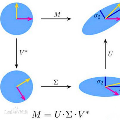In this paper, we study the estimation of a rank-one spiked tensor in the presence of heavy tailed noise. Our results highlight some of the fundamental similarities and differences in the tradeoff between statistical and computational efficiencies under heavy tailed and Gaussian noise. In particular, we show that, for $p$ th order tensors, the tradeoff manifests in an identical fashion as the Gaussian case when the noise has finite $4(p-1)$ th moment. The difference in signal strength requirements, with or without computational constraints, for us to estimate the singular vectors at the optimal rate, interestingly, narrows for noise with heavier tails and vanishes when the noise only has finite fourth moment. Moreover, if the noise has less than fourth moment, tensor SVD, perhaps the most natural approach, is suboptimal even though it is computationally intractable. Our analysis exploits a close connection between estimating the rank-one spikes and the spectral norm of a random tensor with iid entries. In particular, we show that the order of the spectral norm of a random tensor can be precisely characterized by the moment of its entries, generalizing classical results for random matrices. In addition to the theoretical guarantees, we propose estimation procedures for the heavy tailed regime, which are easy to implement and efficient to run. Numerical experiments are presented to demonstrate their practical merits.
翻译:在本文中,我们研究了在严重尾尾噪音的情况下,排位点加压的强点估计值。我们的结果突出显示了在重尾和高斯噪音下,统计和计算效率的权衡之间在统计和计算效率之间的一些基本相似和差异。特别是,我们显示,对于按位数排列的1美元,当噪音为4美元(p-1美元)时,权衡值与高山案例的4美元(p-1美元)的相同。信号强度要求的差异,无论有没有计算限制,让我们以最佳速率估计单向矢量,有趣的是,以更重尾巴的噪声缩小,并在噪音只有第4个有限的时刻才消失。此外,如果噪音少于第4分钟,那么,也许最自然的方法,尽管在计算上是难以解决的,但这种权衡也是不完美的。我们的分析利用了估算单位峰值和随机色标的光谱标准之间的密切联系。特别是,我们显示随机调调调调调的光谱规范的顺序可以精确地显示,在最短的时段里,我们可以精确地展示其模拟的实验结果。



